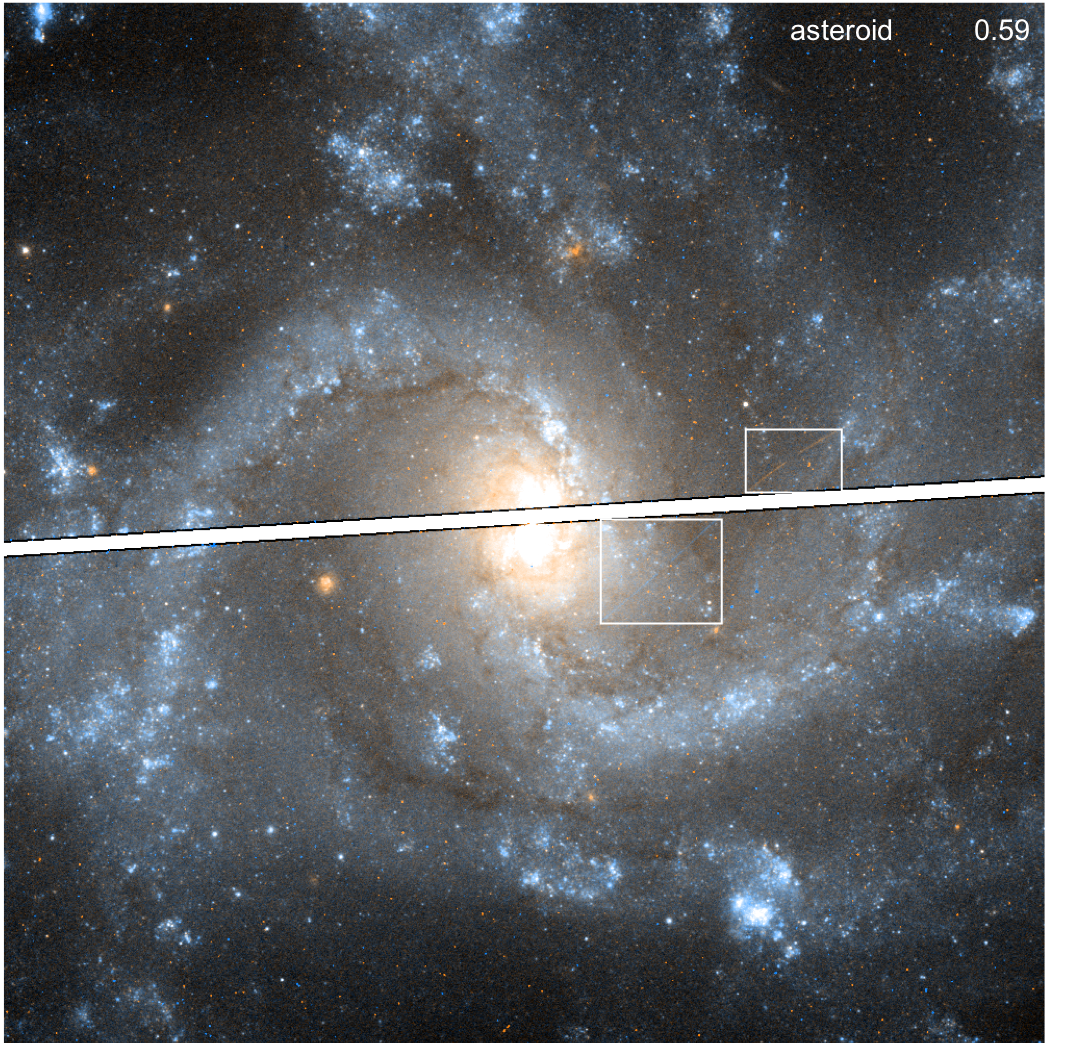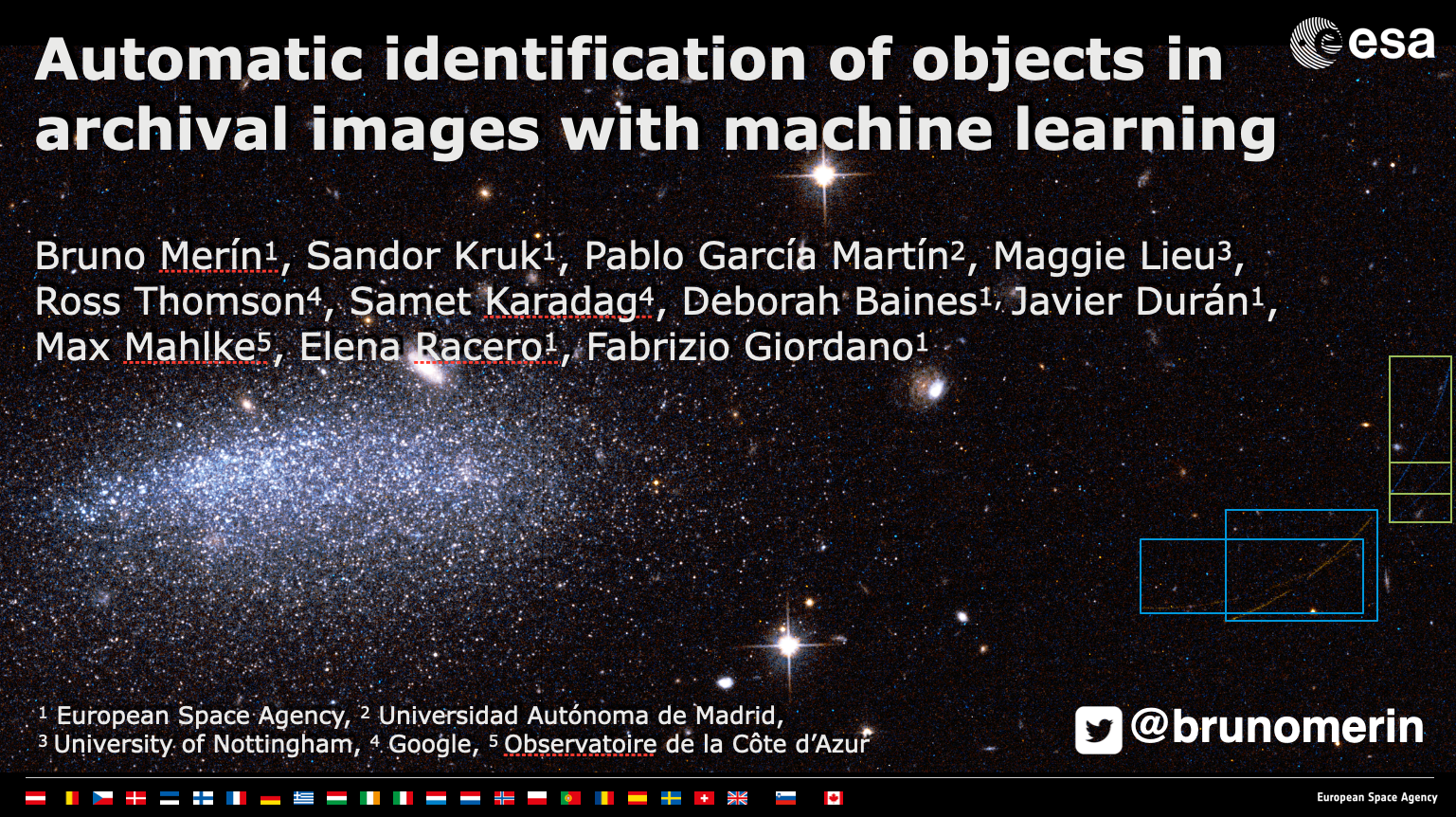Which image could represent well our deep learning asteroid search project?

Yesterday we asked our collaborator Sandor Kruk for a nice image to represent our AutoML project to detect new asteroid trails in HST images and he sent us this image. Isn’t it gorgeous?
It is an image of nearby spiral galaxy NGC 5468, situated at 140 million light years away from us, with asteroid 2002 LX55 in front, identified by AutoML (the boxes show the identification). The image was taken by the Hubble Space Telescope on 29-12-2017. The credit for the image: ESA/Hubble & NASA (Hubble observation PI: Prof. Adam Riess).
By the way, the AutoML algorithms assigns a probability of 59% to those trails in the image being from an actual asteroid flying in front of Hubble’s cameras as they observed the galaxy. Isn’t it a bit too conservative here? Maybe it was because of the galaxy in the background that it gave it such a low score, because to my human eyes, it is a beautifully clear asteroid trail! What do you think?


